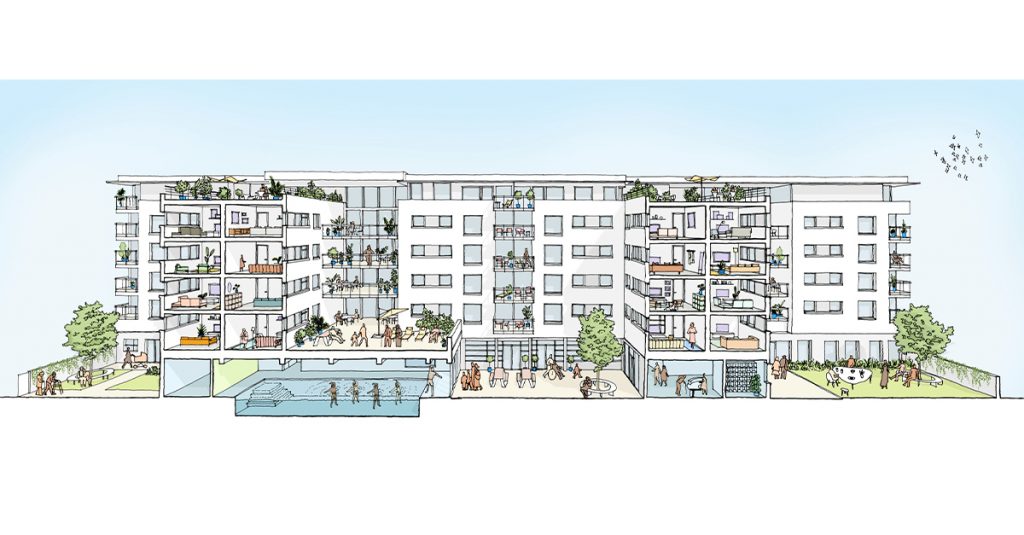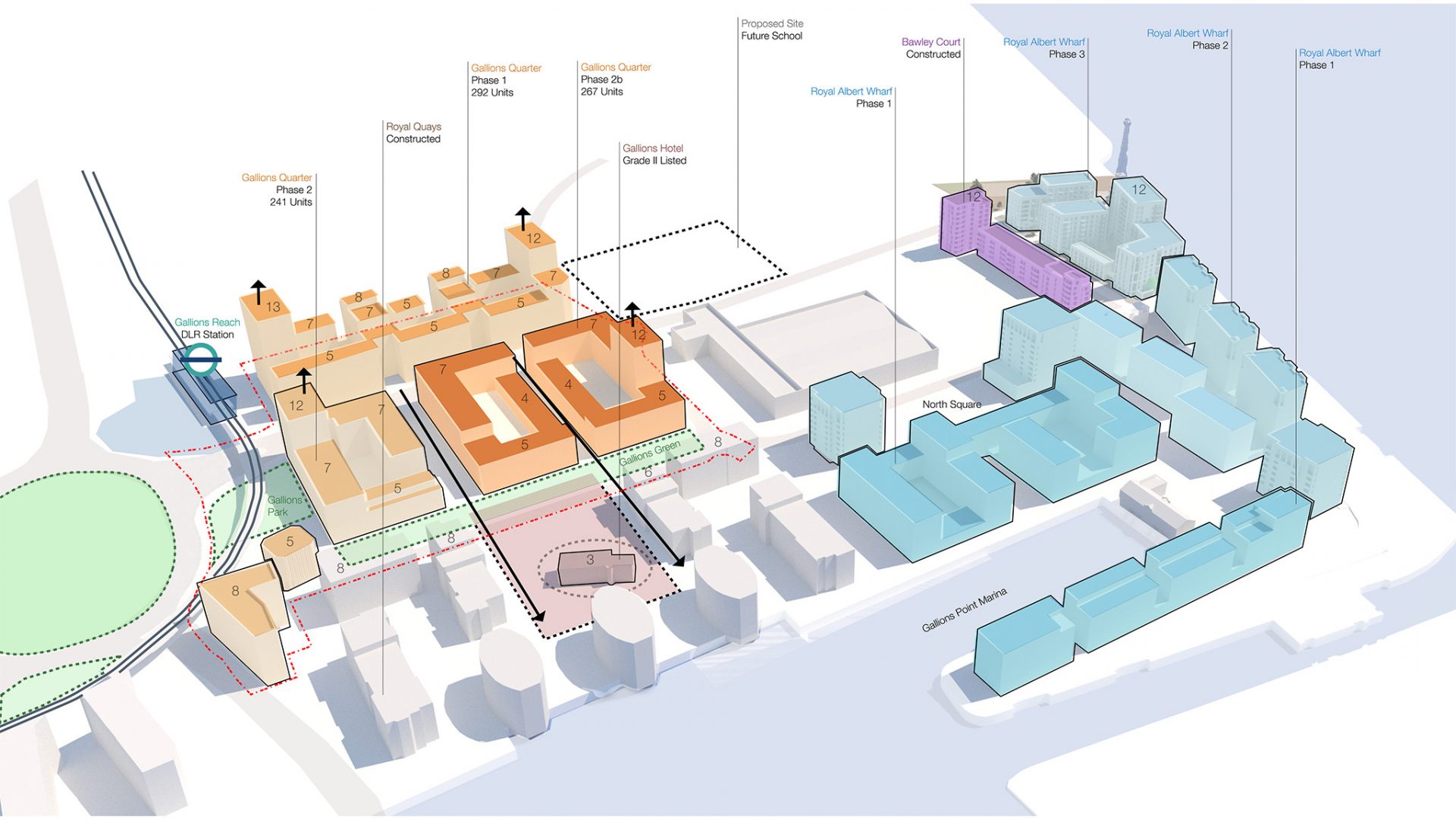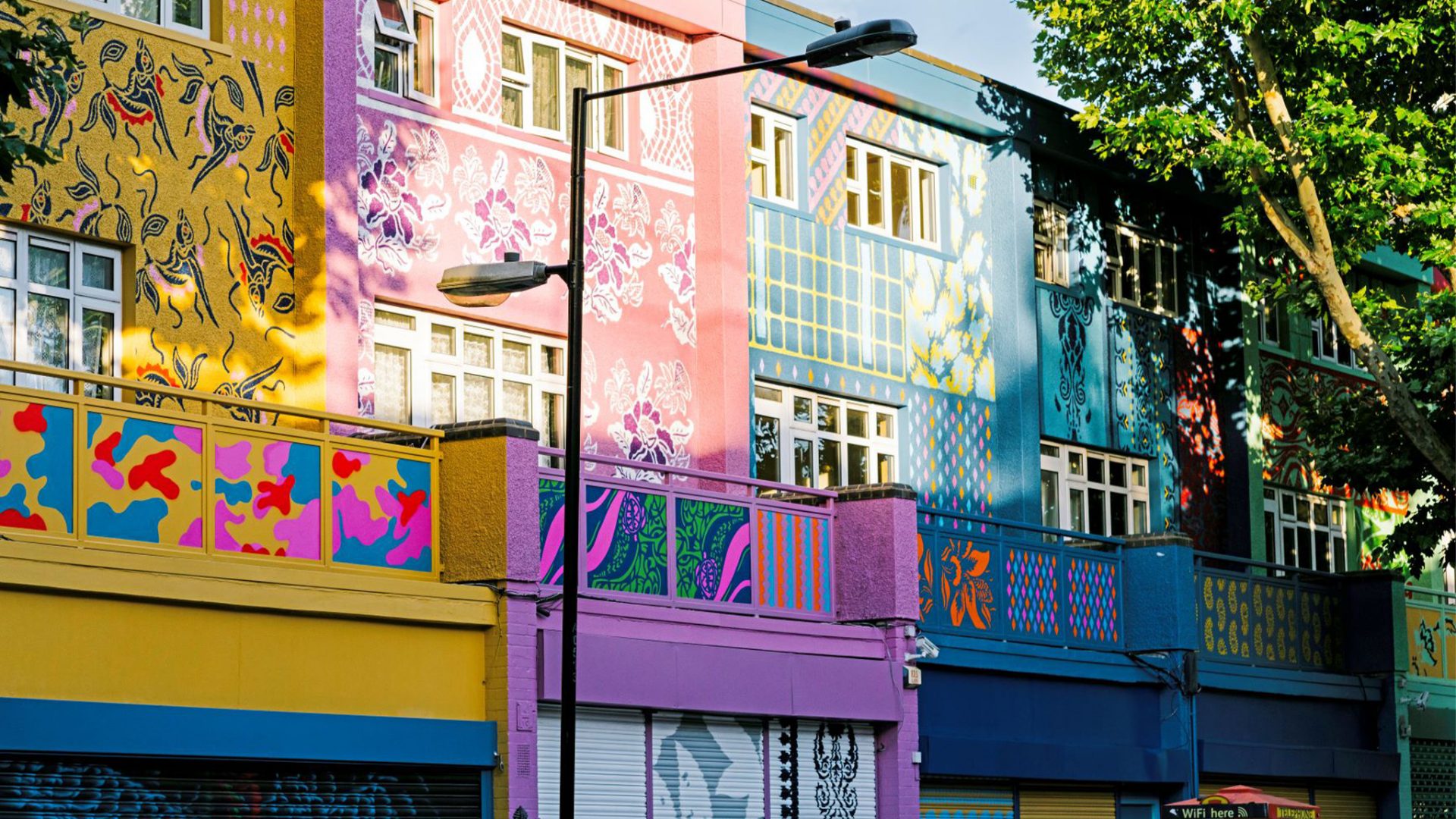Emily Lawrence is an Associate at Jestico + Whiles. In this article, Emily reflects on the principles of social interaction in Darwin Court, a new model for housing a broad community of older residents.

After nearly 20 successful years, the principles of social interaction and personal choice that we embodied in Darwin Court are more relevant and important than ever.
Today, approximately 3.8 million older people live alone, with increased risk of social isolation and loneliness, according to Campaign to End Loneliness. This figure is likely to rise, as the result of increased life expectancy.
Twenty years ago, Peabody Trust conceived of a new model for housing a broad community of older residents, whose quality of life would be improved by nurturing self-sufficiency, offering education programmes, and provision of care services when required. The whole idea was to encourage residents to remain active and independent for as long as possible. It was a new way of thinking about the support of older people founded on four guiding principles:
- Promoting mutual help
- Maximising individual independence
- Enhancing quality of life
- Providing a model of provision for the future
Jestico + Whiles was commissioned by Peabody Trust to help realise their concept with the design of Darwin Court. Innovative at the time, this community project initiated a radical, new approach to the idea of home and care for older people with the aim that they become more independent, take greater responsibility for their own lives and feel they belong to a strong community. We now know through research such as the English Longitudinal Study of Ageing, that these aims are some of the key ingredients needed to tackle loneliness and its effect on physical health, mental health and wellbeing.
The notion of the purpose-built community facility is more relevant now than ever before; offering fitness, healthcare and trainingfacilities that foster mutual help, wellbeing, self-development and social activities, Darwin Court provides a civic and social model for future care of the over-fifties. Since its completion, Darwin Court has formed a focus for the surrounding community andhelped rejuvenate the local area.
The building successfully balances the communal and residential spaces through a hierarchy of private, semi-private and public spaces, which allows residents to choose between different degrees of social interaction. For example, a meandering ’street’ connects thepublic spaces at ground floor level, encouraging interaction between the residents and the local community. The arrival experience wasgiven particular attention and the often aggressive barrier of the generic ‘reception desk’ was reimagined so that the first experience is of greeting and welcome rather than control.
In the heart of the building is an exhibition space that provides the opportunity for people to linger and strike up a conversation. The aim is to respect the need for privacy whilst promoting chance encounters in a safe, secure environment. Special facilities such as training rooms, computer rooms and of course the swimming pool, were selected and located so that they could flex at given times from private, accommodating only the residents, to open, whereby non-residents are encouraged to come in to facilitate social interaction. The trans-generational interaction was particularly significant, with grandchildren swimming with grandparents, or working with them in the computer room. The hard line between learning and leisure has been dissolved.
Since Darwin Court was completed, we are so much more aware of the risks to our health and wellbeing of feeling lonely, with public campaigns such as Age UK’s No One Should Have No One and the Governments appointment of a Minister for Loneliness. We havelearnt that social activities are important to tackling persistent loneliness and that living within a safe, friendly and openneighbourhood creates a real sense of place. Darwin Court provides a model for a sustainable future to the benefit of its residents andthe wider community.
The project revolutionised our attitude to designing for the mounting older generation. With its realised vision of cooperation, shared experience, participation, learning and self-esteem, Darwin Court is more relevant today than ever before.






